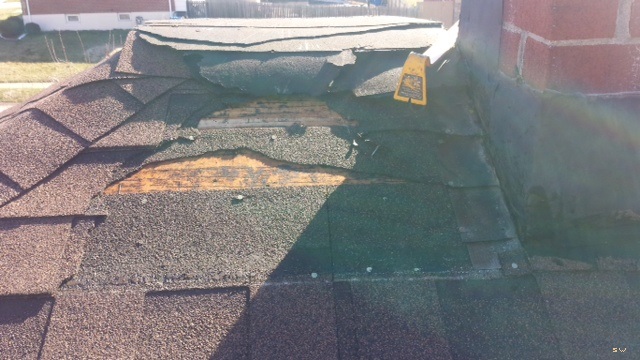Q&A - Who is at Fault for This Leaky Roof?

Homeowner, Michelle, is curious who is at fault for a faulty rooftop AC installment.
After a rooftop AC unit had caused leaks in the roof on three separate occasions, a Florida homeowner, Michelle, had both the roofers and the AC installers come out to fix it. This was her question:
“I had a new flat roof installed about one year ago. The entire AC unit sits on the roof. The AC unit had to be lifted on a stand. This was done in conjunction with the new roof. After the first heavy rain, I had a roof leak. It has happened three times. The first two times, the roof company came out and fixed what they thought the issue was. The third time, they put blame on AC contractor. He came out and patched every possible hole he saw. My question, who is at fault for the leak? I assume that when AC reinstalled, roofing company seals entire roof up, including any holes left by AC contractor?”
John Kenney from Cotney Consulting Group had this to say in response to the question:
“Hi Michelle,
These types of leaks can be tricky when going back and forth between a roofing contractor and an HVAC contractor, but the end goal for you is to have a leak-free roof/HVAC unit. My suggestion to you is to have both contractors meet onsite to review and resolve the issue together. The only way to avoid finger-pointing is to have a management representative and technician from each company meet at the project and resolve the issues together for you. The best way to accomplish this is by having a conference call with the contractors and yourself to set up the day and time. I have done this on projects I have been involved with, which has ended in a satisfactory fix every time.”
The next response was from Kyle Nurminen at Total Roofing Systems - The Metal Roofing Experts in Stuart, Florida:
Hello Michelle,
First off, I am sincerely sorry to hear you have found yourself in this situation. It is actually quite common in the industry, and that is why we always recommend using roofing and AC contractors who have worked with one another in the past, or who might actually be divisions of the same company.
Aside from that, without putting my own eyes on this situation, it is quite difficult to determine what may have gone wrong. The roofer's responsibility is to ensure the connection directly at the roof membrane is watertight, but there are varying ways they can seal that penetration that may or may not coincide with the design and/or material the AC contractor is tying into that. Also, if the roof is not properly tapered, both may be using materials that may not stand up to ponding water. Even still, just when we think we have seen it all, someone comes up with something we may have never seen before in this situation.
It is for that very reason that I would be happy to provide a physical assessment of the situation myself - as an unbiased third party at no cost — in hopes I may be able to offer some sort of resolution. Would you like to take me up on that, Michelle?
Continue the conversation in our Forum!
Have a question? AskARoofer.
Find your local roofing contractor in the RoofersCoffeeShop® Contractor Directory.









Comments
Leave a Reply
Have an account? Login to leave a comment!
Sign In